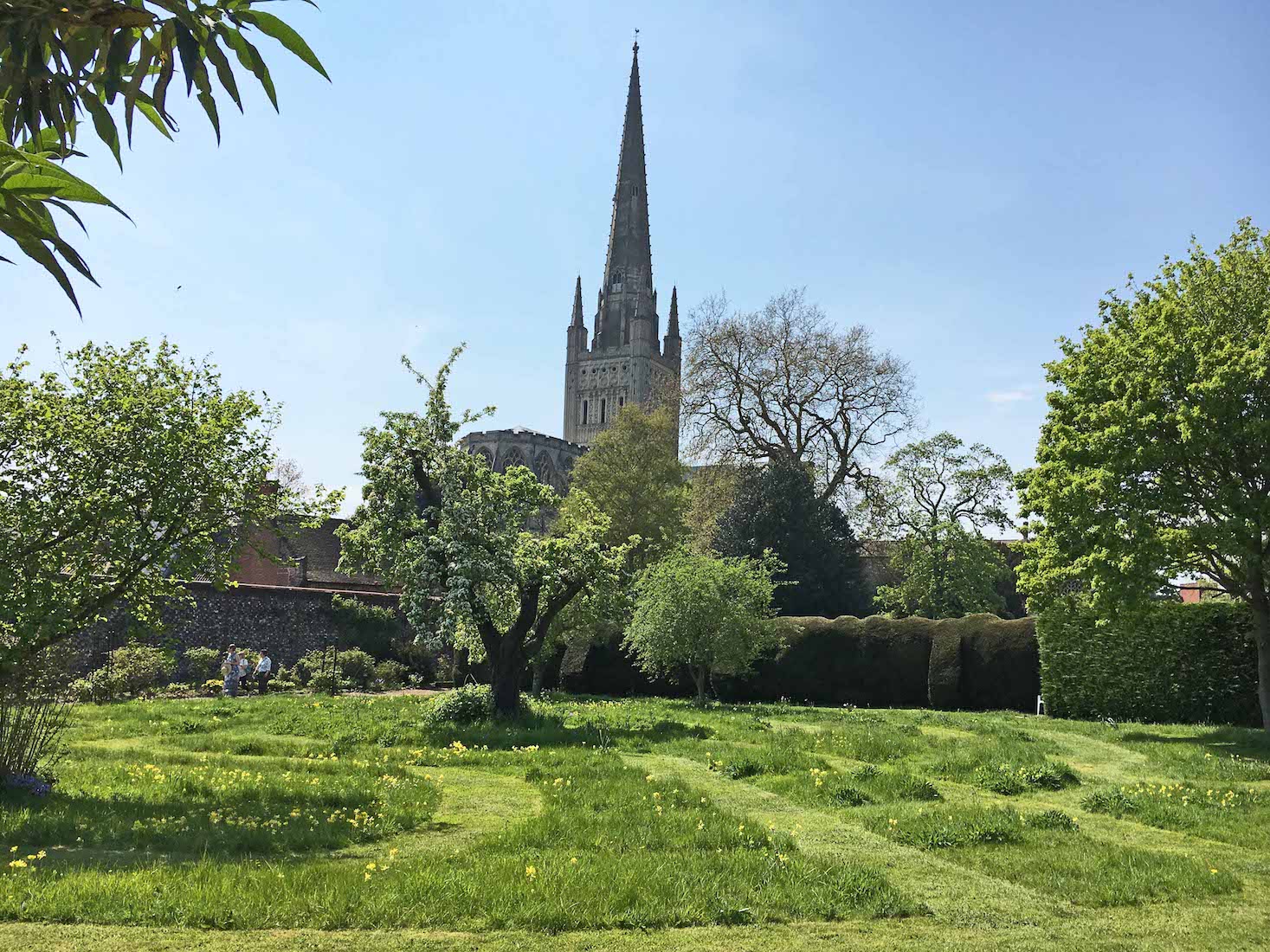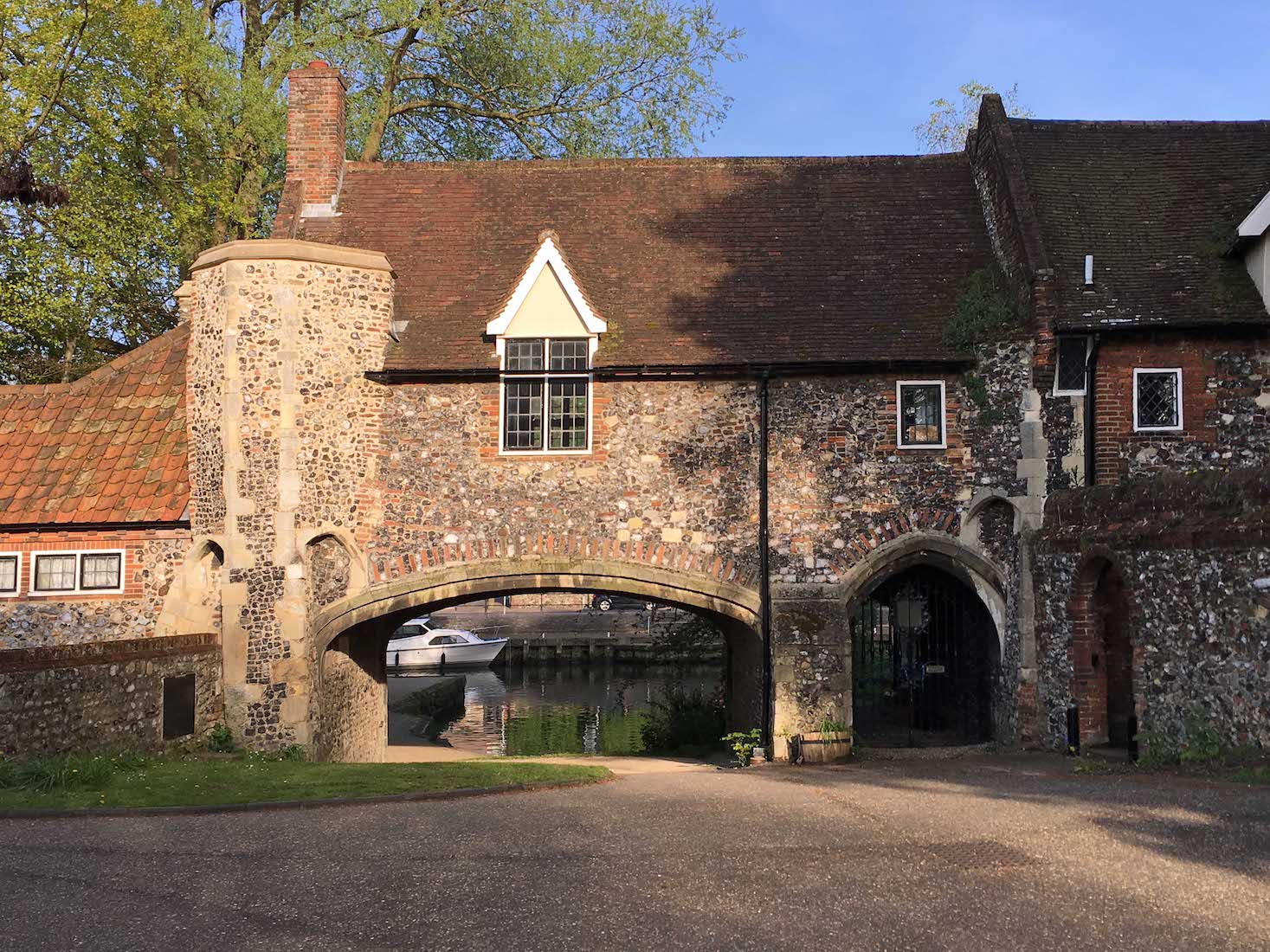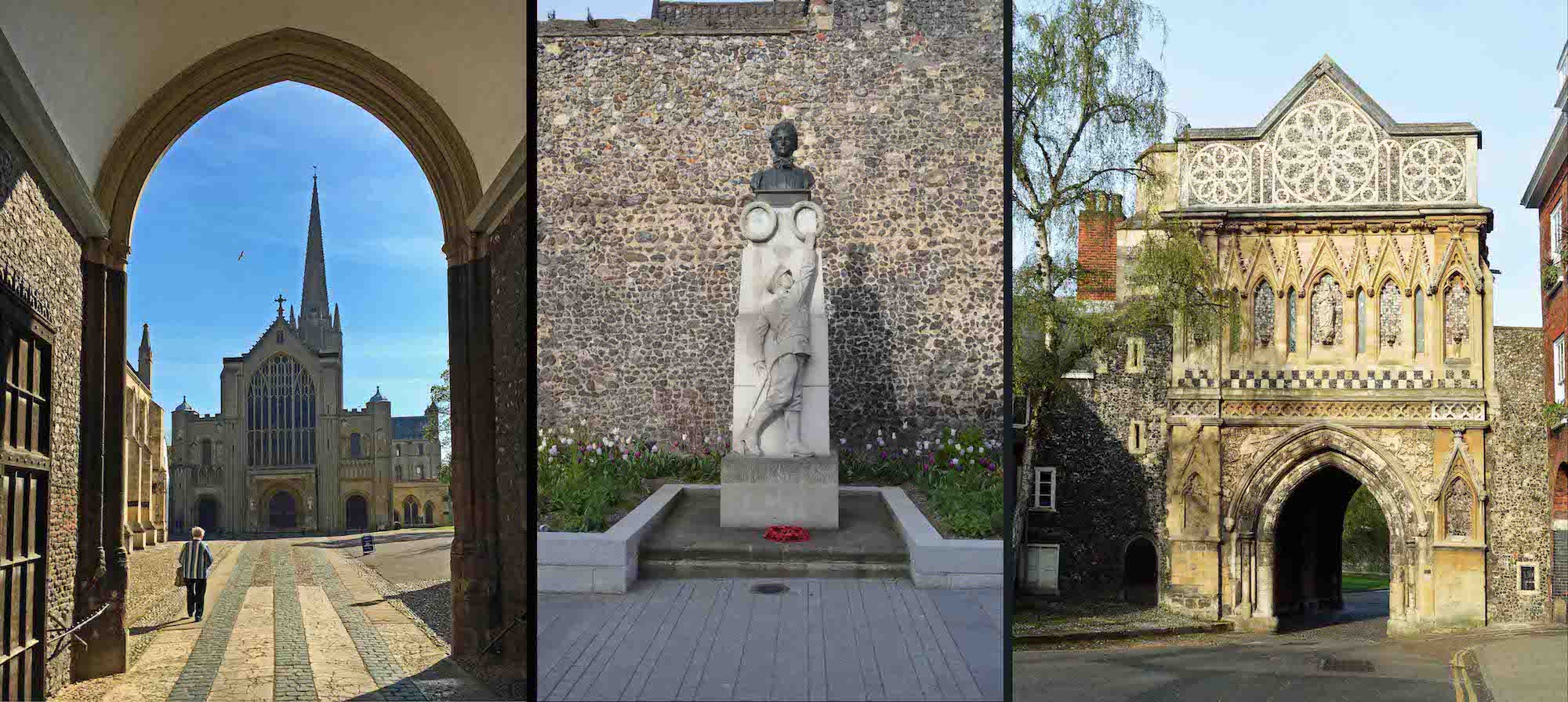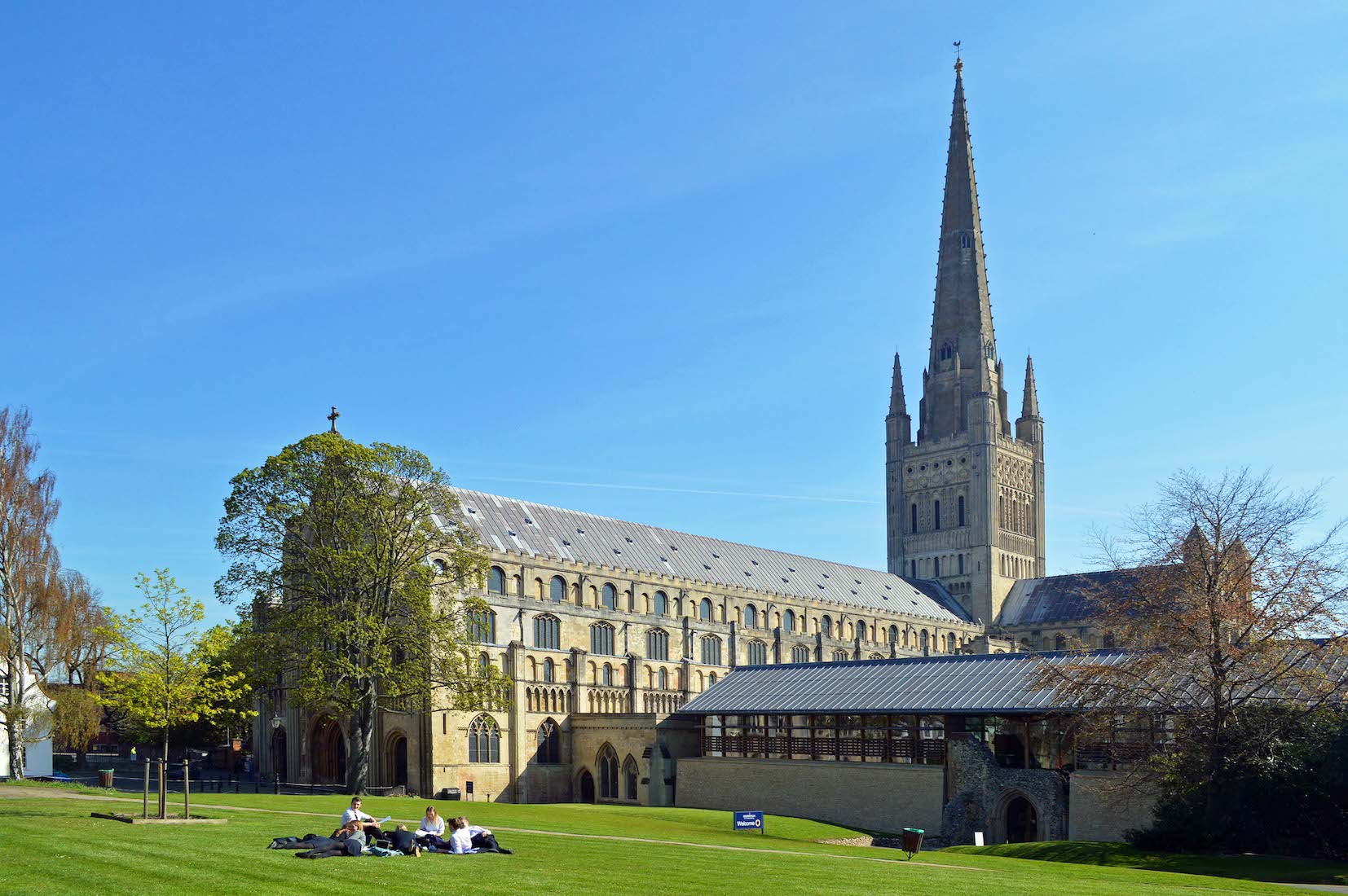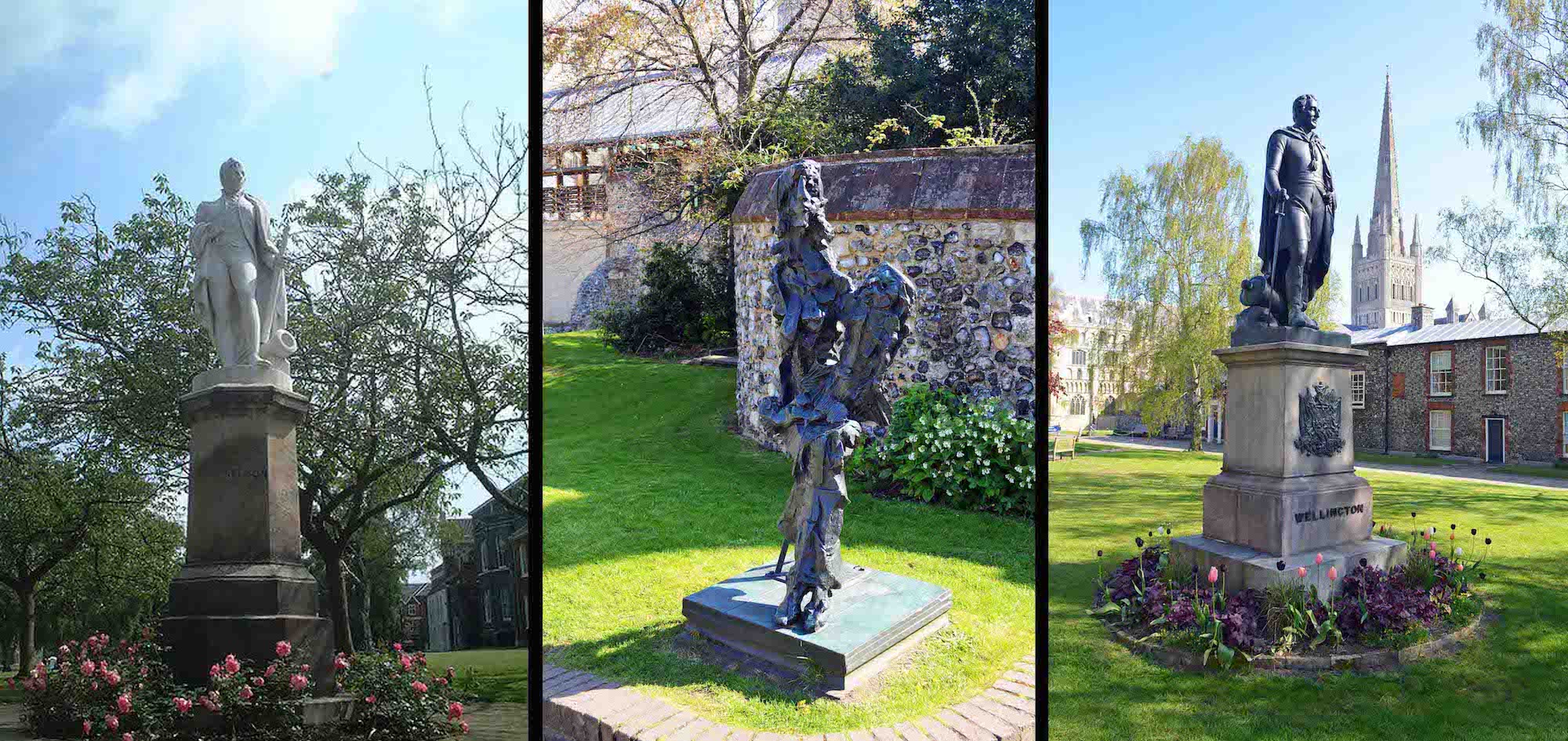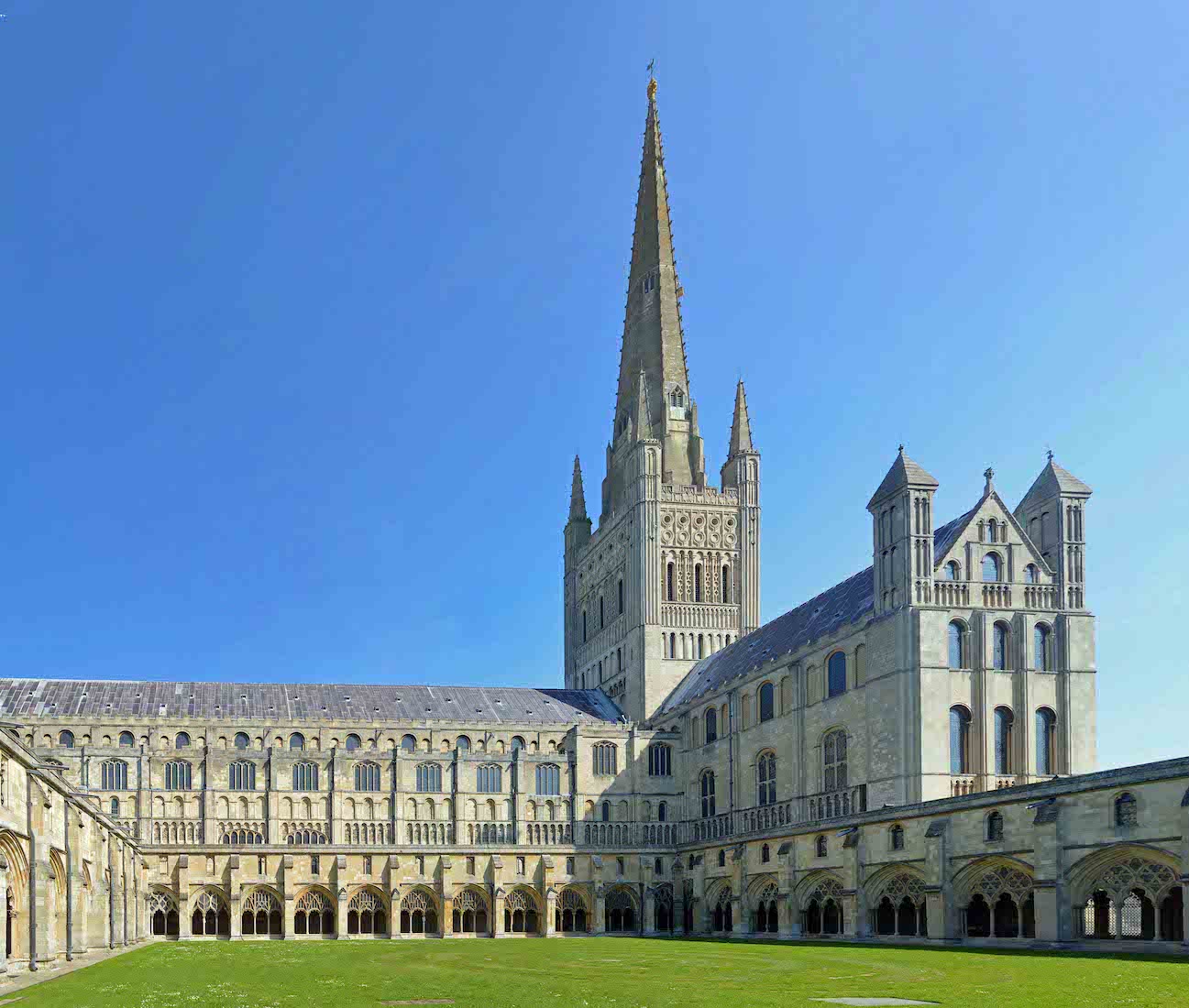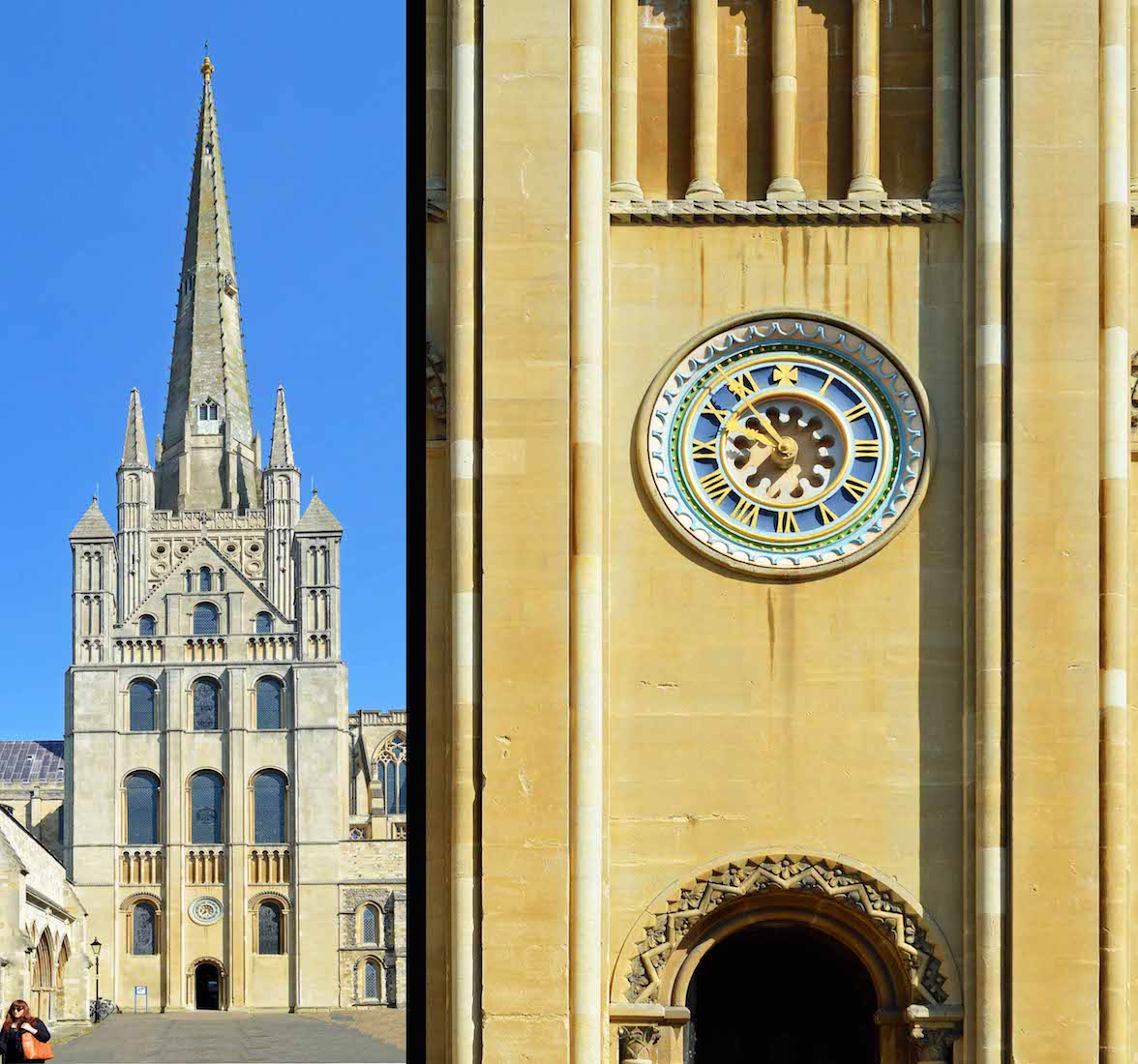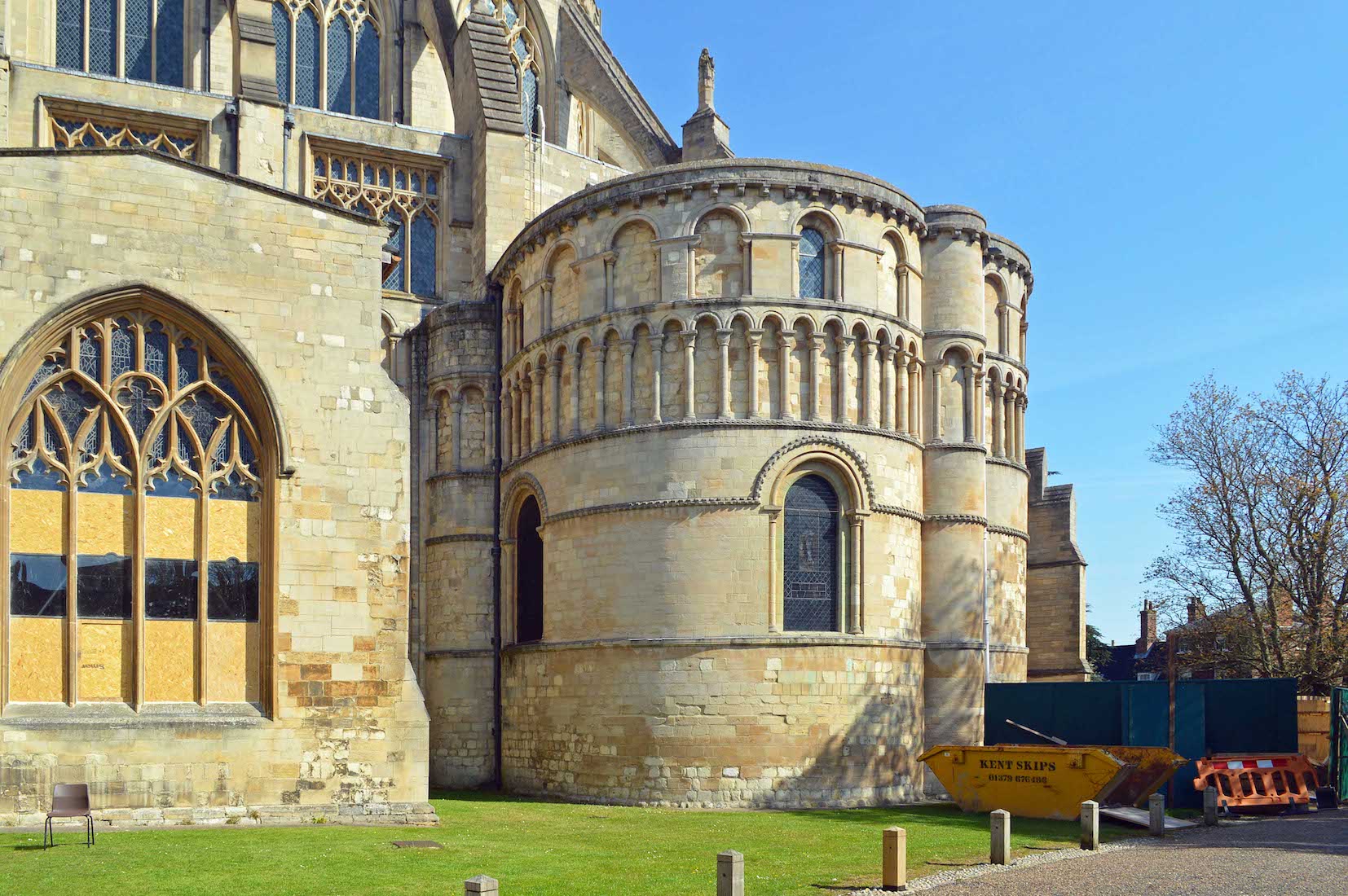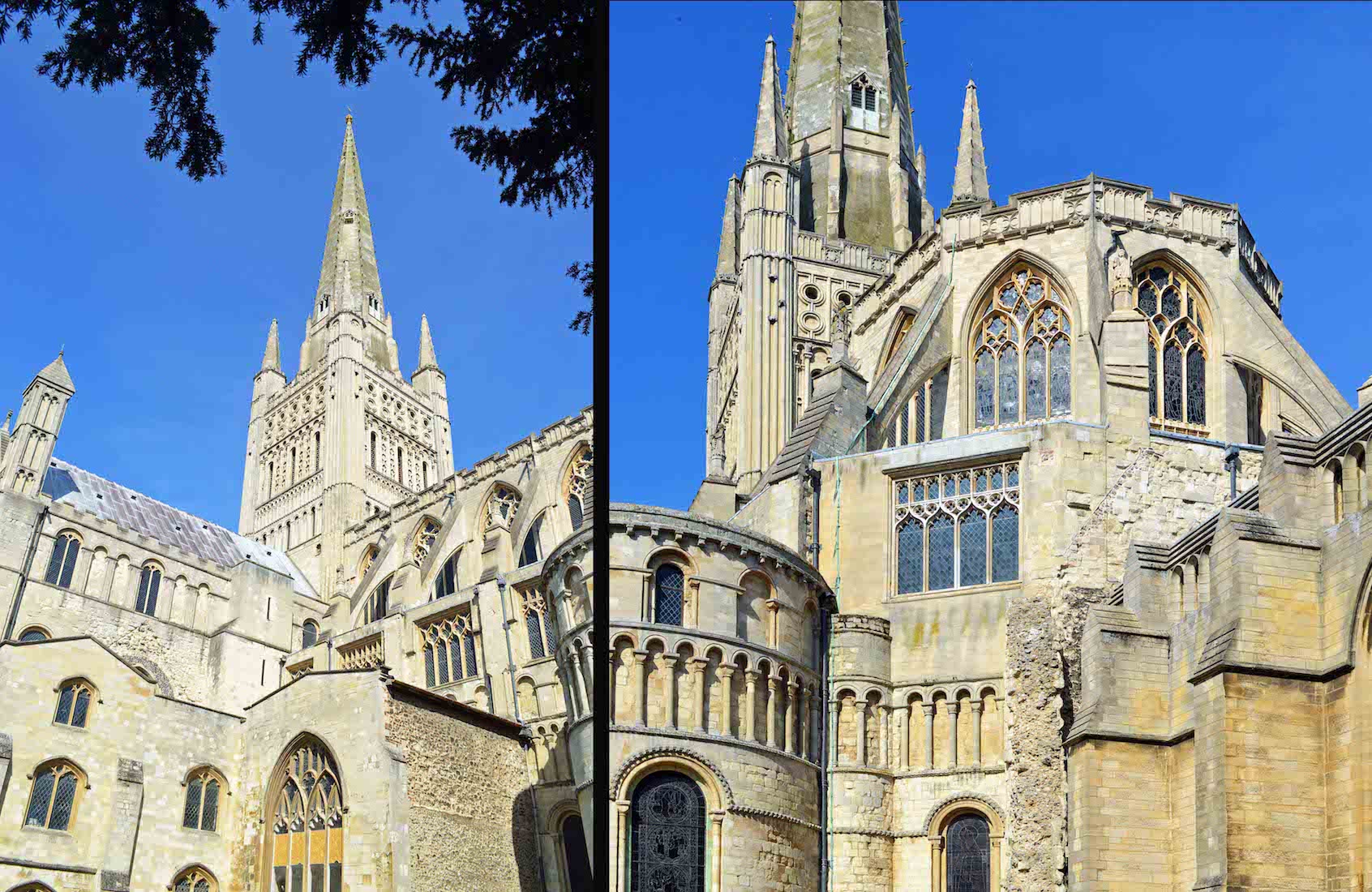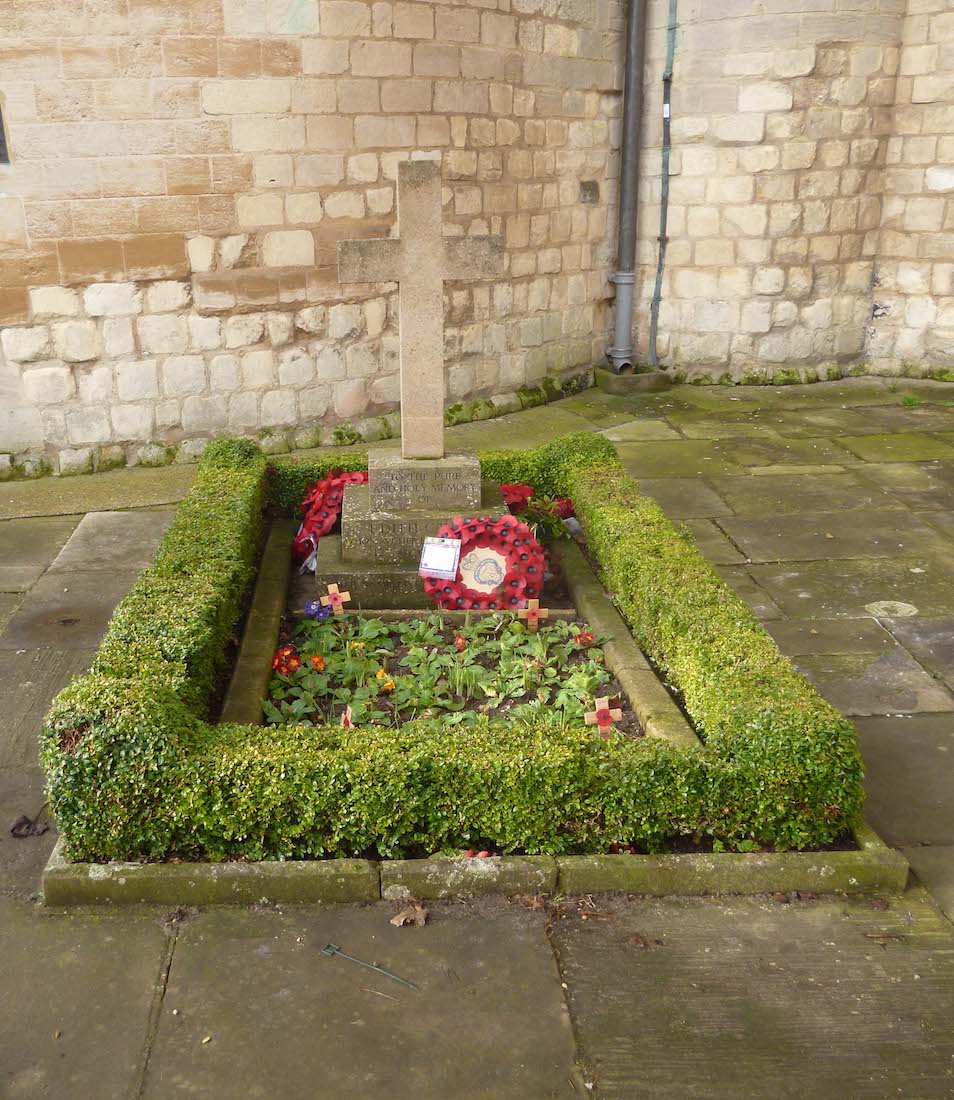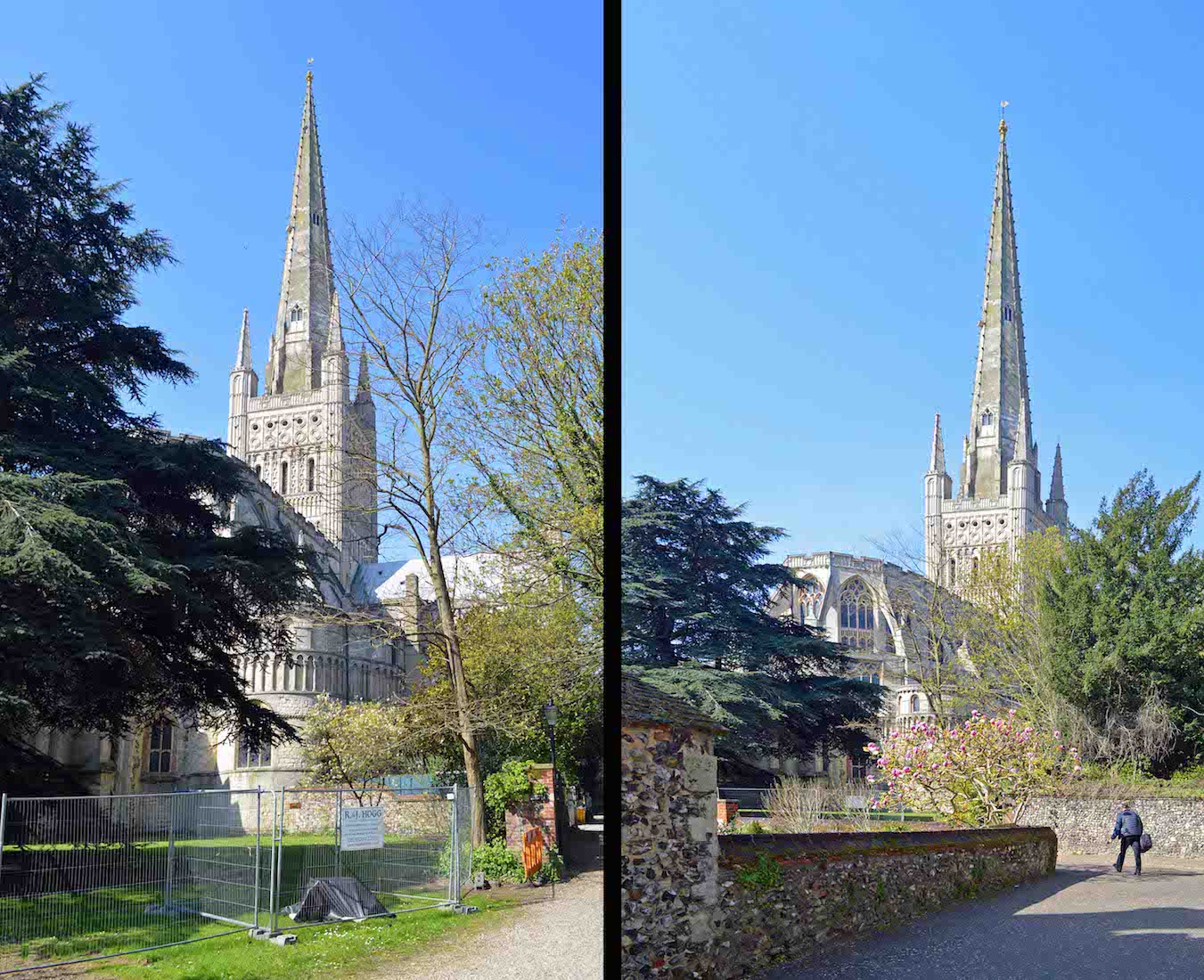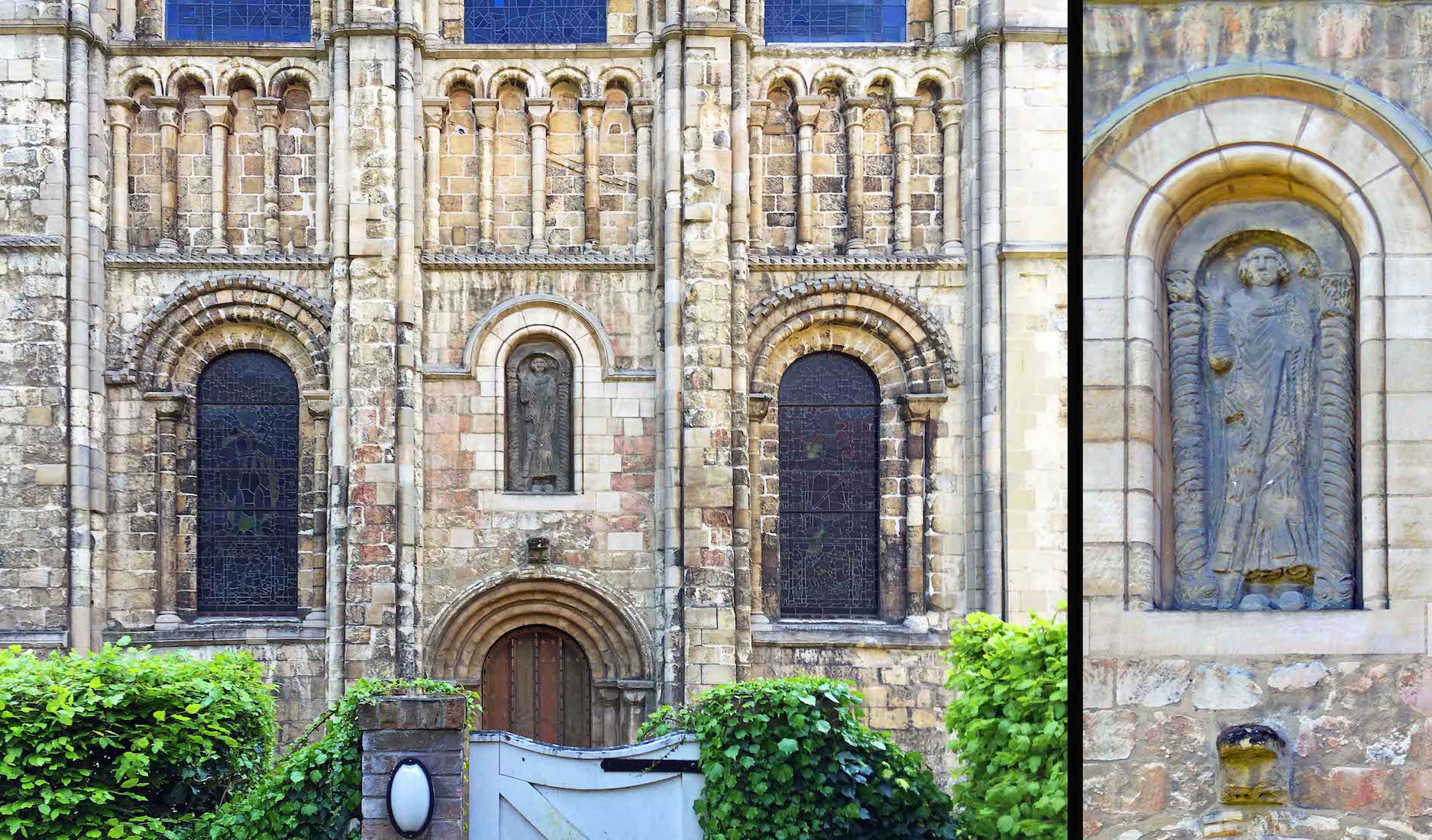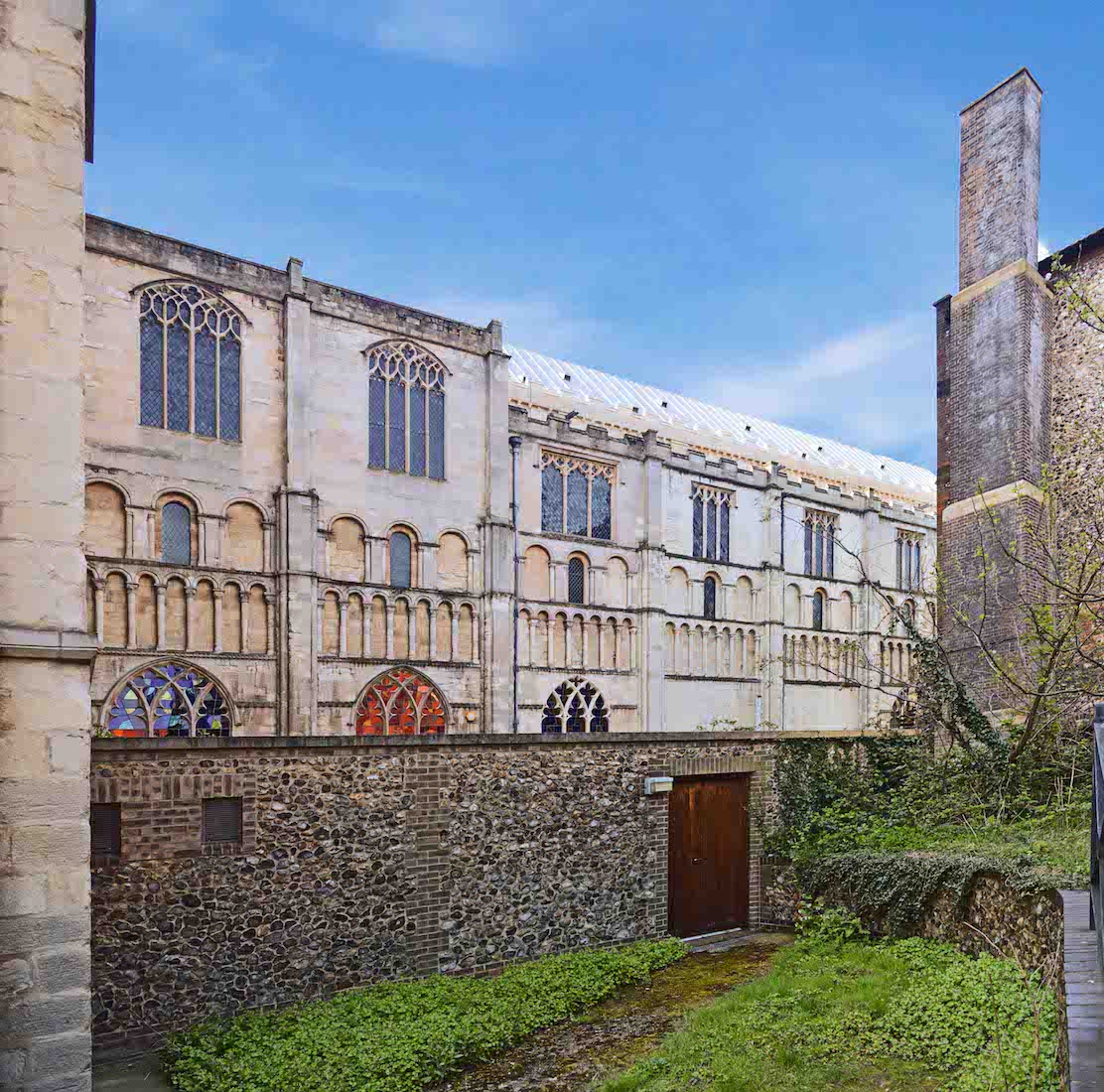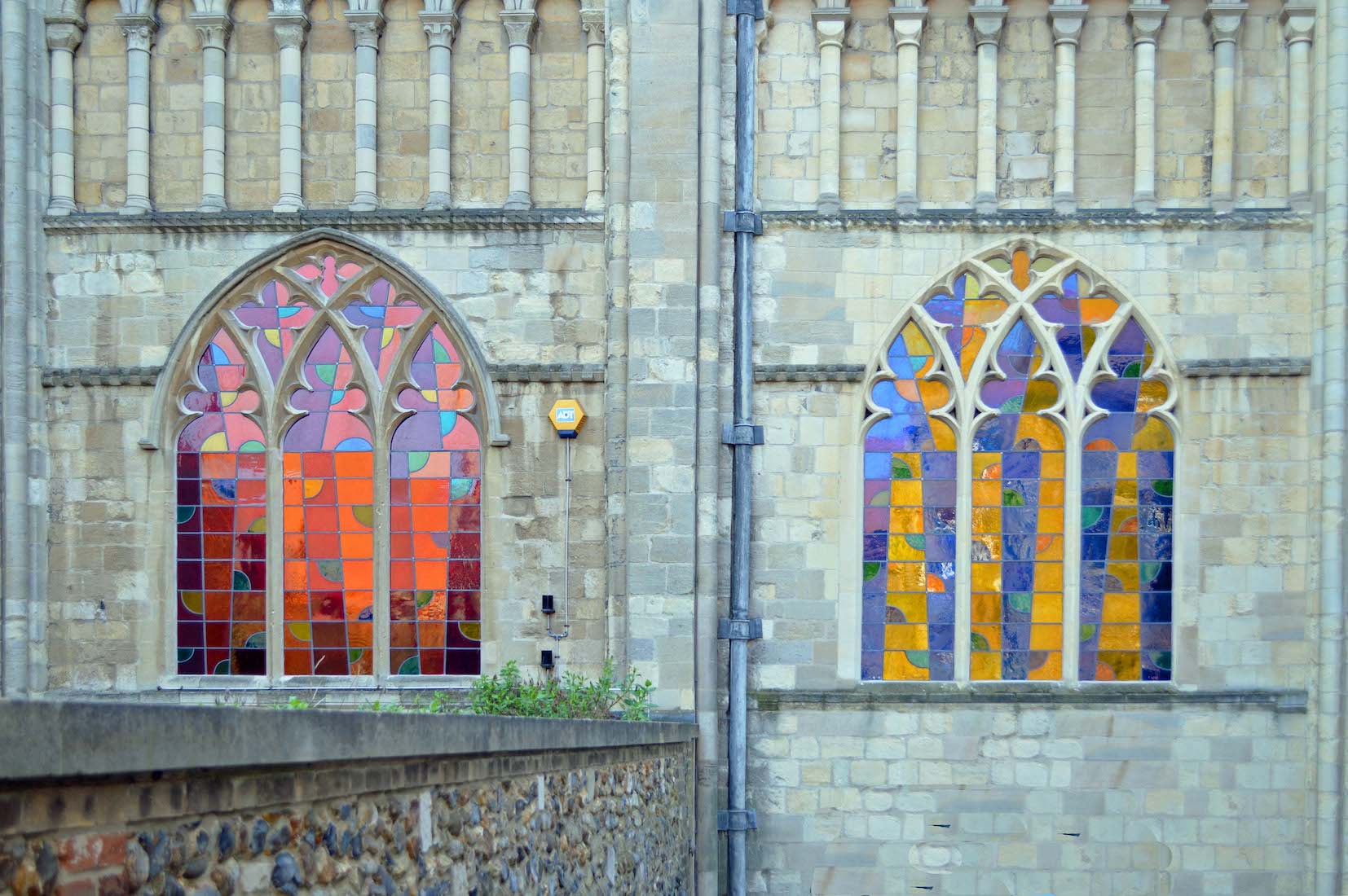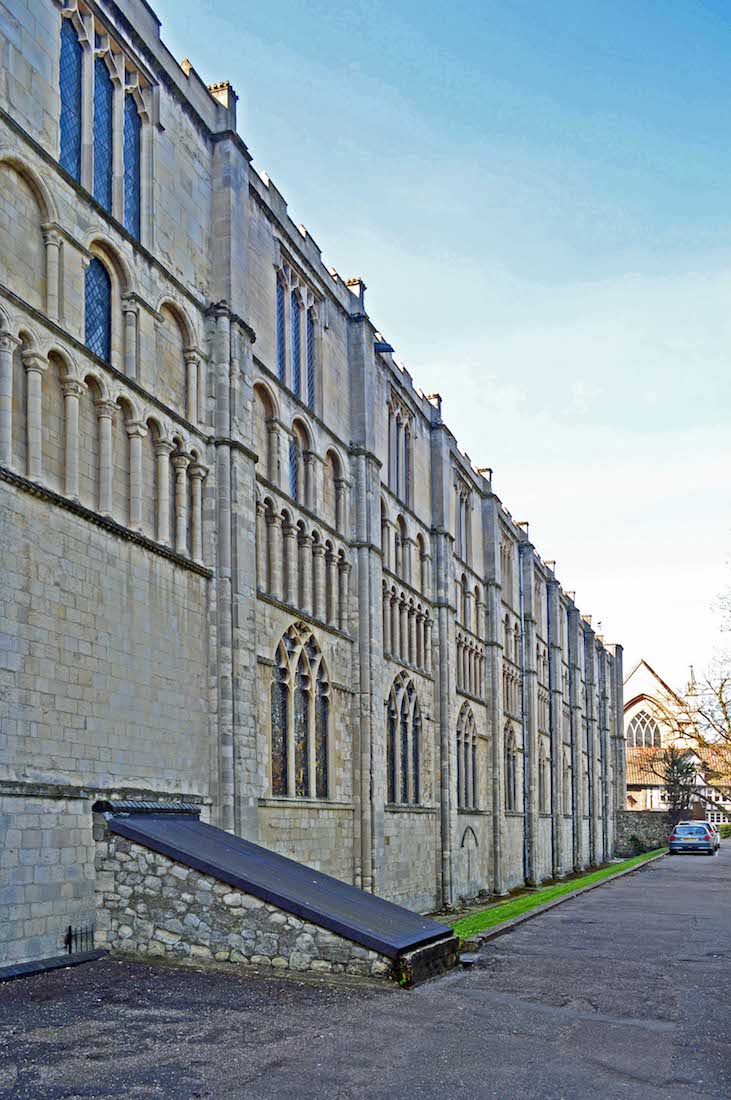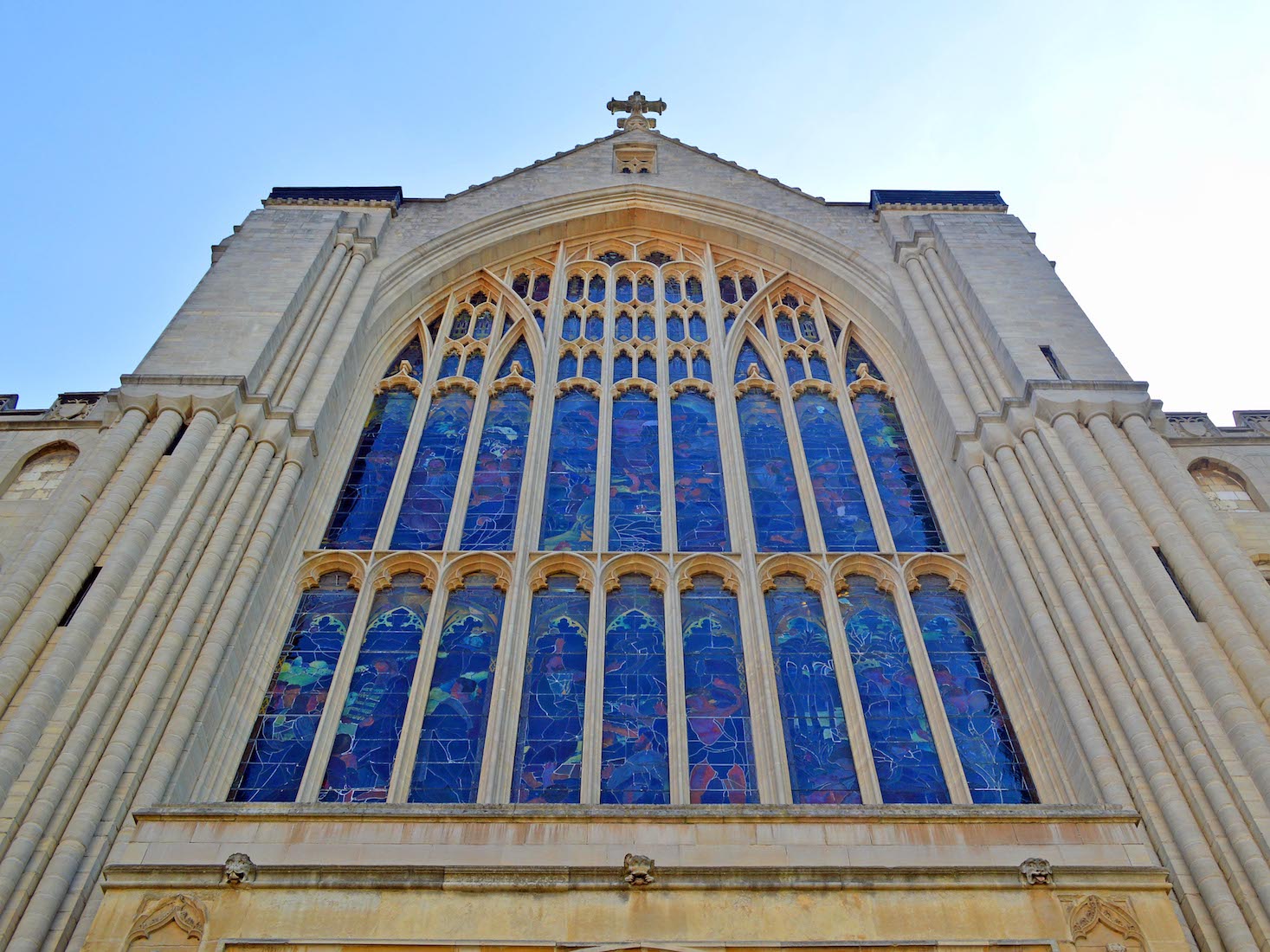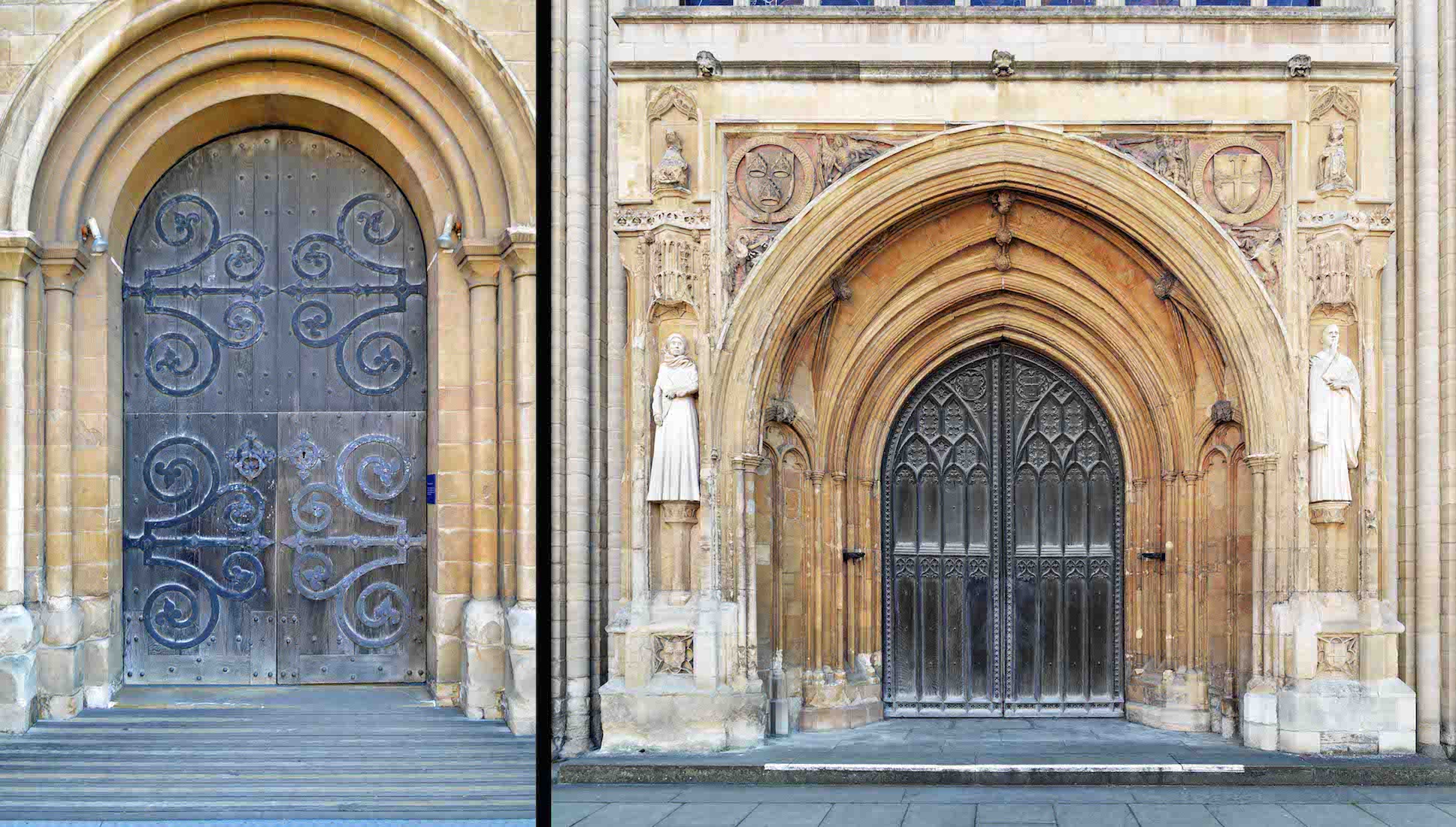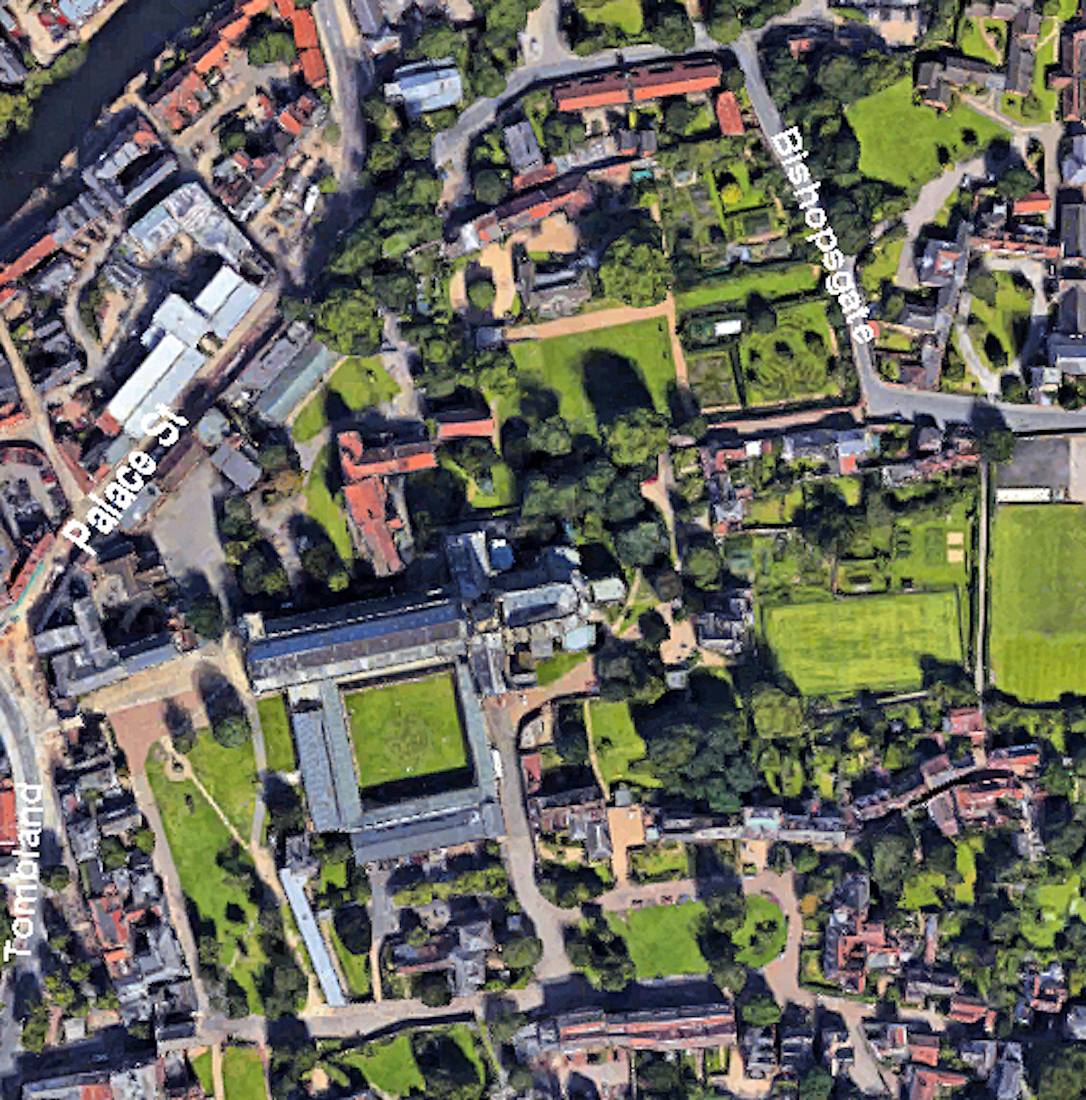
Norwich Cathedral has a traditional cruciform shape with a large square cloister area to the south. It is set in a large irregularly shaped area bounded by a flintstone wall with many greened spaces. In orientation the sanctuary is geographically just north of east – close enough to be identified with the liturgical East conventionally assigned to the sanctuary. PLAN
2. BISHOP’S GATEHOUSE
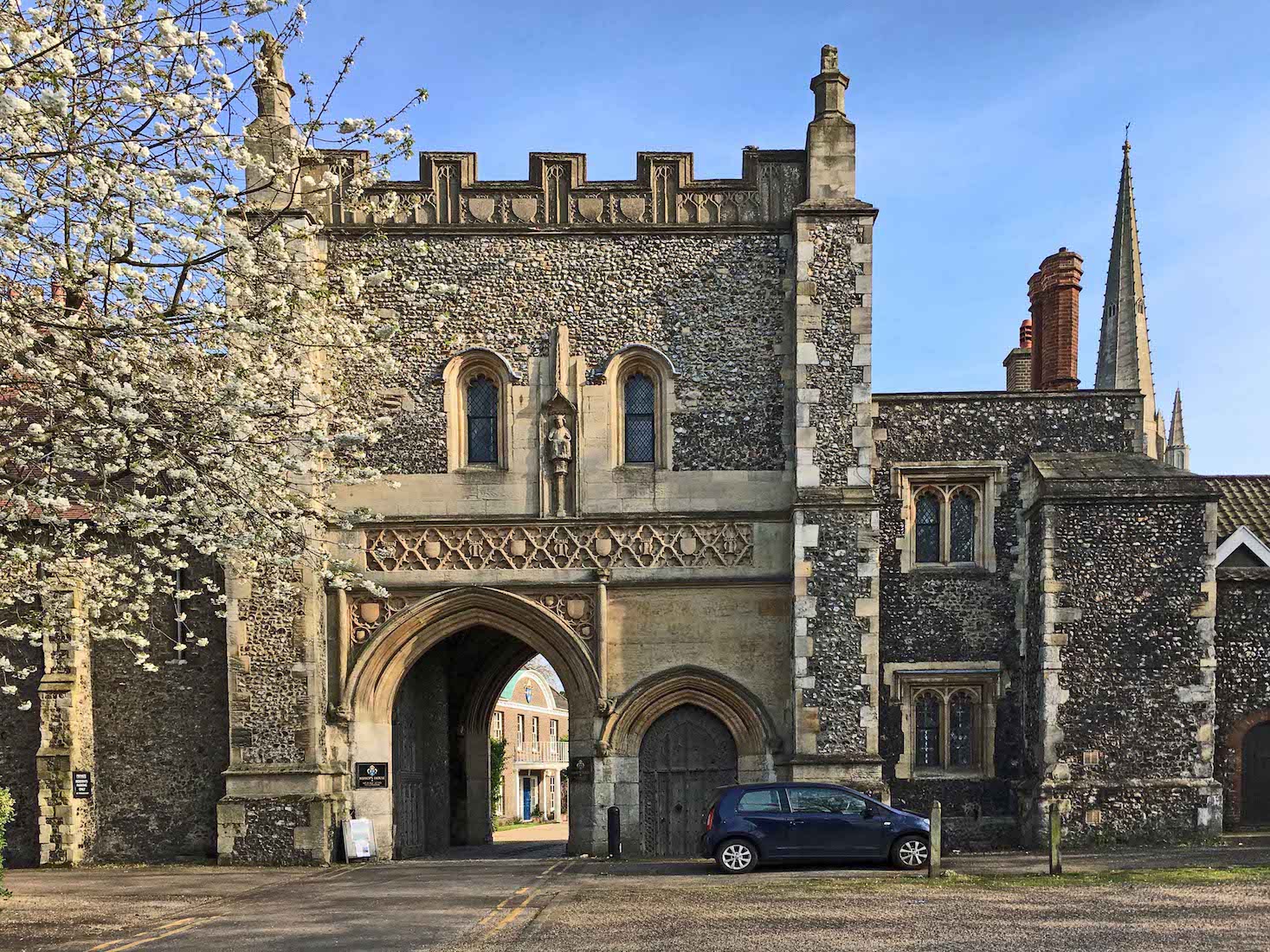
We begin by following around the boundary wall. To the North is the gatehouse to the Bishop’s Palace. No access to the Cathedral this way, but if you are lucky, you might get to view the garden, and even get some tea and scones!
3. LABYRINTH AND VIEW
The Bishop’s garden is large – he must have at least one gardener! Of interest here is a mown labyrinth – a path for pilgrims to follow as an aid to meditation. We shall come across a better defined labyrinth much later in our tour. The Cathedral forms a wonderful backdrop.
4. PULL’S FERRY
The River Wensom flows around and slightly beyond the North and East of the Cathedral grounds. In the Wall to the East is a Gatehouse called Pull’s Ferry which is of some interest because stone from Caen in France was transported through this gateway along a specially dug canal when the Cathedral was being built.
5. WESTERN GATES
There are two gates opening out of the Western boundary wall. At left is the more Northerly Erpingham Gate, and at right the ornate Ethelbert Gate, a little distance to the South. Sir Thomas Erpingham KG (c. 1355–1428) was an English knight. The Ethelbert Gate is a reminder of the ruined church of St Ethelbert that preceeded it before the violence of 1272. A statue of nurse Edith Cavell stands near the left gate.
6. INSIDE THE CLOSE
We enter one of the Western gates onto a large lawned area looking across to the Cathedral. The view from this angle is somewhat cluttered by buildings attached to the West side of the cloisters. In fact there is no really good angle from which to view the Cathedral – except perhaps from above! Notice the great length of the nave, and also the number of levels of the windows.
7. WESTERN STATUES
There are three statues on the Western lawns. Lord Nelson stands to the North, and Lord Wellington to the South. A piece written about these two great men is entitled ‘The peacock and the professional: Nelson and Wellington, both heroes for all their flaws’. [Paul Johnson: Daily Mail article] To the East is a less recognizabole sculpture depicting the Annunciation.
8. CLOISTER VIEW
As we circumnavigate the main Cathedral building, we walk past the cloisters. We shall return here later, but for now we note how the cloisters are placed in the right angle between the nave and the South transept. The Cathedral is the cathedral church for the Church of England Diocese of Norwich and is one of twelve Norwich heritage sites.
9. SOUTH TRANSEPT CLOCK
Norwich Cathedral has quite a history of clocks. In 1290 the sacrist’s roll mentions a clock – probably a water clock. Then the sacrist's roll of 1322 to 1325 mentions the construction and installation of a clock which had a large astronomical dial and automata including 59 images and a choir or procession of monks.
10. CHAPELS
Proceeding East of the South transept we come to St Bauchon’s Chapel, bring renovated, and the double round of St Luke’s Chapel. The foundation stone of the Cathedral was laid in 1096, and the Cathedral was consecrated in 1101, although of course it was not then as it is today. However, building was essentially complete by 1145.
11. VIEWS FROM THE SOUTH EAST
Norwich Cathedral has an interesting assortment of chapels at the East end. Here we see the great central tower rising up from the crossing, the high curved wall and windows of the apse, and St Saviour’s Chapel extending East below. This chapel was built in 1930, replacing the existing Lady Chapel. There looks to be some rough unfinished work on the walls here!
12. EDITH CAVELL’S GRAVE
Edith Louisa Cavell (1865 – 1915) was a British nurse born near Norwich. She is celebrated for saving the lives of soldiers from both sides without discrimination and in helping some 200 Allied soldiers escape from German-occupied Belgium during WWI, for which she was arrested. She was accused of treason, found guilty by a court-martial and sentenced to death. Despite international pressure for mercy, she was shot by a German firing squad. The Church of England commemorates her in their Calendar of Saints on 12 October.
13. NORTH EAST VIEWS
Attractive little country lanes branch out East of the Cathedral, but it is hard to escape the tall graceful spire. The Cathedral is 140 metres (460 ft) long, and the height of the spire is 96 metres (315 ft). The building of the Cathedral was completed by Bishop Eborard de Montgomery in 1145. The Cathedral is dedicated to the Holy and Undivided Trinity.
14. ST ANDREW’S CHAPEL
We retrace our steps, and make our way along the North side of the Cathedral, coming to the North Transept and the curved wall of St Andrew’s Chapel. The Cathedral building is still imposing from this angle, but the wall of the Bishop’s Garden comes in close along here, restricting our path. It is claimed that the Cathedral has the finest Norman tower in England, surmounted by a 15th-century spire.
15. NORTH WALL OF THE NORTH TRANSEPT
The best view of this transept is from the Bishop’s Garden! Above the central door is the standing figure of a bare-headed ecclesiastic, blessing with his right hand, and holding a crozier in his left, and framed by twisted columns. It is suggested that the figure is St Felix, who had converted East Anglia in the 630s and 640s. The slab may have included a painted halo, and also possibly lettering in the curved arch above his head.
16. VALLEY OF THE SHADOW!
The pilgrim’s way becomes even more unfriendly with the sun’s rays obscured and a cold wind. We pass the North transept, and through the gate to the North wall of the nave.
17. MODERN NAVE WINDOWS
Here there is a splash of colour from (in fact) three modern nave windows of similar design.
18. NAVE NORTH WALL
Our circuit of the Cathedral is nearly complete. Of interest here is a blank section of the nave wall. It appears that perhaps there was once an adjoining structure here – a passage way leading to the Cathedral?
19. WEST WINDOW
Now standing before the West wall of the Cathedral we look up in admiration of the Great West Window. The path from the Erpingham Gate leads us directly to this point. The West window dates from c. 1435.
20. WEST DOORS
There are two side doors and a central door in the West wall. The central entry is flanked by two sculptures created by local sculptor David Holgate to commemorate the millenium. At left is Mother Julian of Norwich – the first woman ever to write a book in English. At right is St Benedict (480 – 543), known today for his ‘Rule of Saint Benedict’, containing precepts for his monks.


